This is the ULTIMATE guide to making authentic Singapore and Malaysian-style Chicken Satay – easily achieve tender, fragrantly spiced, chicken skewers with this recipe.
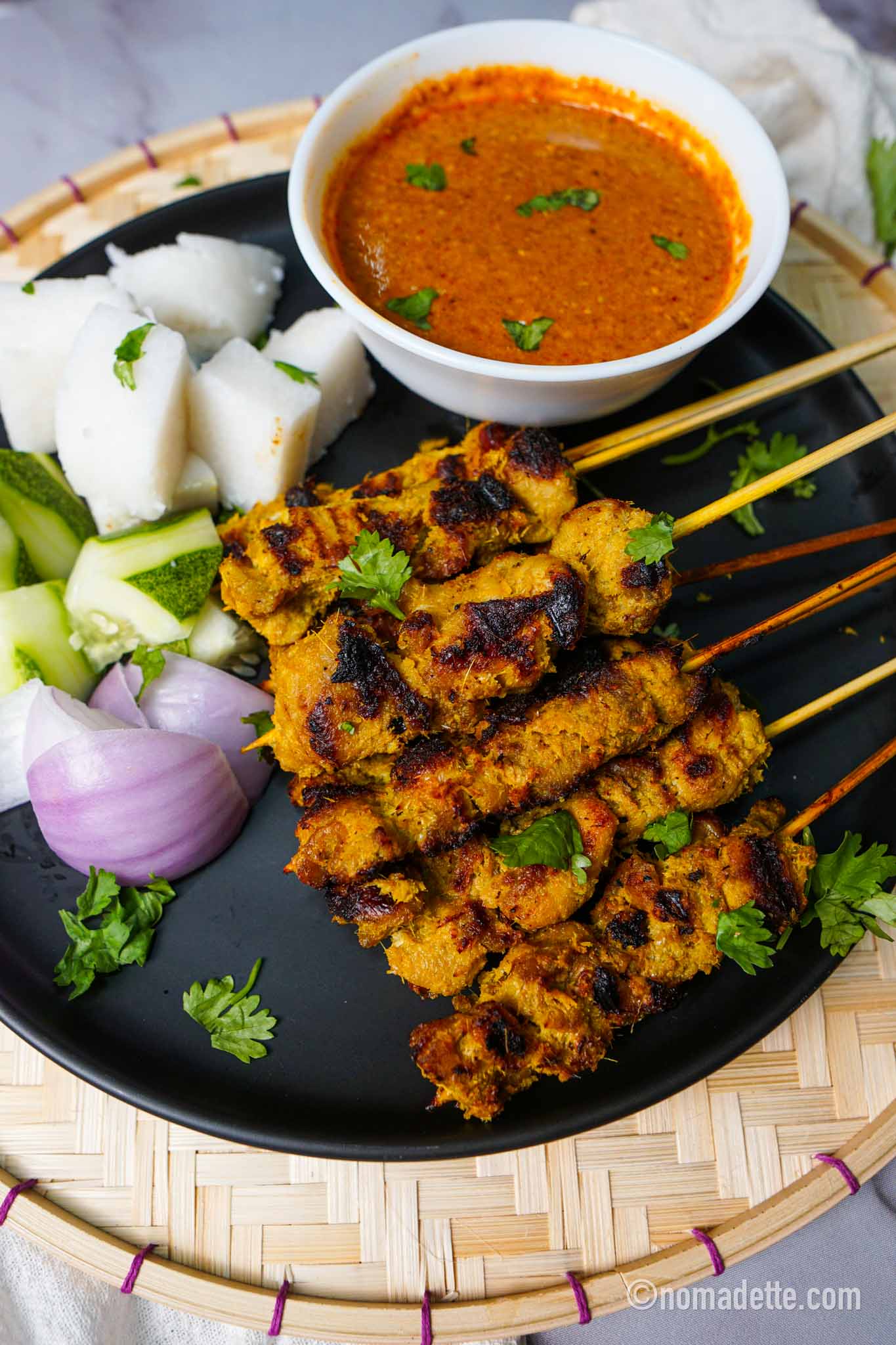
Meats on sticks… what’s not to love! If there is one dish to represent Southeast Asian cuisine, it is Satay – skewered, seasoned meats grilled to perfection.
There are so many variations of satays throughout the region, and in this post, we are covering the Singapore and Malaysian style of Chicken Satay. Satay is additionally one of the most signature dishes in Malay cuisine.
Chicken satay is not just a delightful dish; it carries cultural significance in both Singapore and Malaysia. It’s a popular street food that brings people together, whether at hawker centers in Singapore or night markets in Malaysia.
The Different Types of Satays
There are so many varieties of Satay, all done in different ways and with different proteins. The key similarity is that they are all skewered, grilled meats.
- The Thai version of Satay uses a Thai curry paste and coconut milk as part of the marinade to tenderise the meat. The peanut sauce also slightly differs.
- The Indonesian Satay, or Sate, tend to incorporate more use of kecap manis as a key ingredient, giving the satays more of a smoky sweet, caramelised finish. The Balinese specialty, Sate Lilit, is one of the more signature Indonesian satays.
Why you will LOVE this Chicken Satay Recipe:
- Skewered Meat Goodness: Easy bites of meats on sticks – this is a true crowd pleaser!
- Easier than it looks: This recipe breaks down all the essential steps and ingredients to making perfectly marinated satay, with ingredients that are accessible!
- Versatility: This marinade recipe will work with other meats. This Satay can also be cooked in a myriad of ways, depending on your preference and what you have.
- Balanced Flavours: This recipe is savoury, sweet and perfectly spiced, giving you balanced flavours in a single bite.
Key Ingredients for Chicken Satay
Chicken
The star of the show, chicken pieces are marinated in a tantalizing blend of spices and herbs, ensuring the meat is juicy and packed with flavour.
Always marinade chicken overnight. I would always recommend using thighs for extra juiciness!
Marinade
The secret to AMAZING satay lies in its marinade. It typically consists of ingredients such as lemongrass, turmeric, ginger, garlic, coriander, cumin, and a touch of sugar.
This marinade imparts such a unique, aromatic flavour to the chicken, and comprises of very easily available ingredients – some of which are pantry staples. These are all of the ingredients you need to make perfect Chicken Satay:
- Onion or Shallots: A combination of onion and shallots are typically used, but don’t stress too much on this; you can just use either or! Red onions are usually used, but yellow or white onions will work just fine too.
- Garlic
- Ginger
- Lemongrass, white inner core: This adds a citrusy note to the satays.
- Ground Cumin & Ground Coriander: These are the two main spice used in Satay, although some would also add ground fennel to the mix.
TIP! I used ground spices for the convenience, but use whole seeds for more intense flavours! Dry toast in a pan until fragrant, before adding it straight to the blender for the marinade. There should be some coarse pieces of the cumin and coriander – this is preferred!
- Turmeric Powder: Chicken Satay would always have a yellow tinge to it… this is thanks to the turmeric powder. This ingredient adds colour AND a warm, earthy flavour to the Satays.
- Palm Sugar: Palm sugar (gula melaka/gula jawa/coconut sugar) will give the satays a caramelised sweetness. If you don’t have this, feel free to use brown sugar or regular sugar.
- Salt
For Grilling:
- Bamboo Skewers: The satay are typically skewered through these bamboo skewers, also known as wooden sticks or satay sticks. This recipe makes about 20 8-inch long satay sticks. Wooden sticks require a bit of prep before using, see directions in the section below. If you have metal skewers, they will work too and you can skip the step to prep.
- Coconut Oil: Basting the satays with coconut oil as they are cooking wil ensure the satays stay moist. Coconut oil will add a lovely aroma to the satays. Alternatively, any neutral-tasting oil such as vegetable oil, canola oil or sunflower oil will work.
Peanut Sauce
A creamy, slightly spicy peanut sauce is an essential accompaniment for chicken satay. It’s made from roasted peanuts, coconut milk, tamarind, and dried chilli paste, for extra richness and addictive heat!
A proper peanut sauce is as important as the satay sticks themselves!
See my dedicated post on The BEST Satay Peanut Sauce you will ever make in your life right here.
How to Make Chicken Satay
1. Ingredient Prep
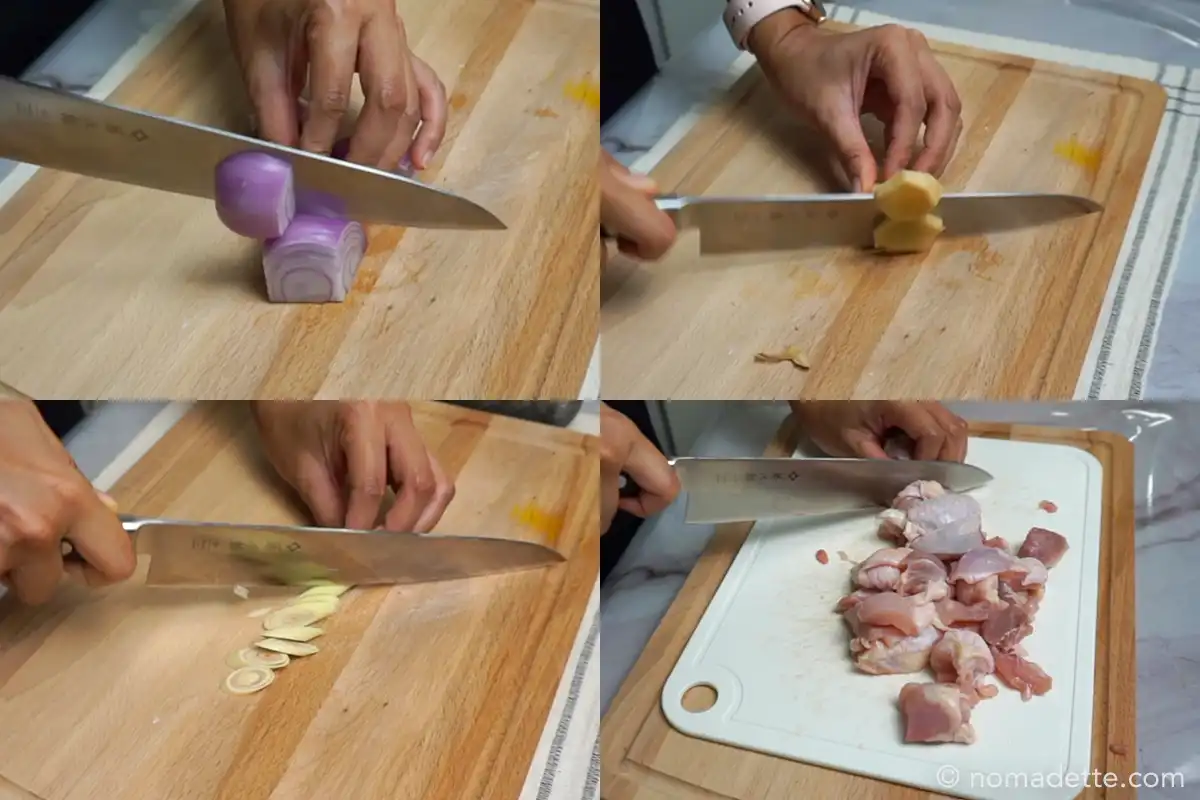
- Peel the garlic, onion and ginger. Roughly chop the onion and ginger into smaller pieces for easier blending.
- Remove the hard outer layer of the lemongrass, and cut off the top part. Chop the lemongrass. Slice the lemongrass at an angle for easier slicing. For more information on how to prepare lemongrass, see this post.
- Cut chicken to equal sizes, about 1/2-inch to 1-inch in size.
2. Prepare the Marinade
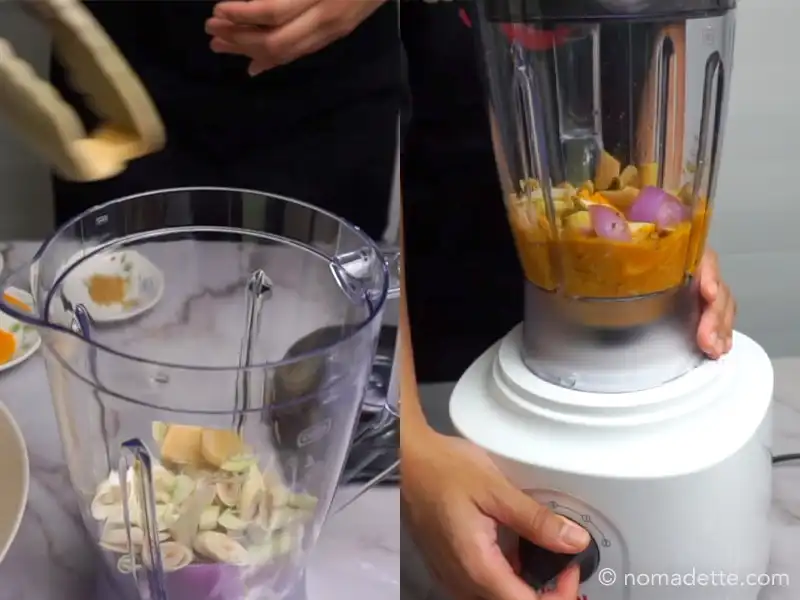
- Add all of the marinade ingredients in a blender or food processor. Blitz until smooth.
- Gradually add water if needed, for easier blending. Do not add too much; we want minimum amount of liquid as possible!
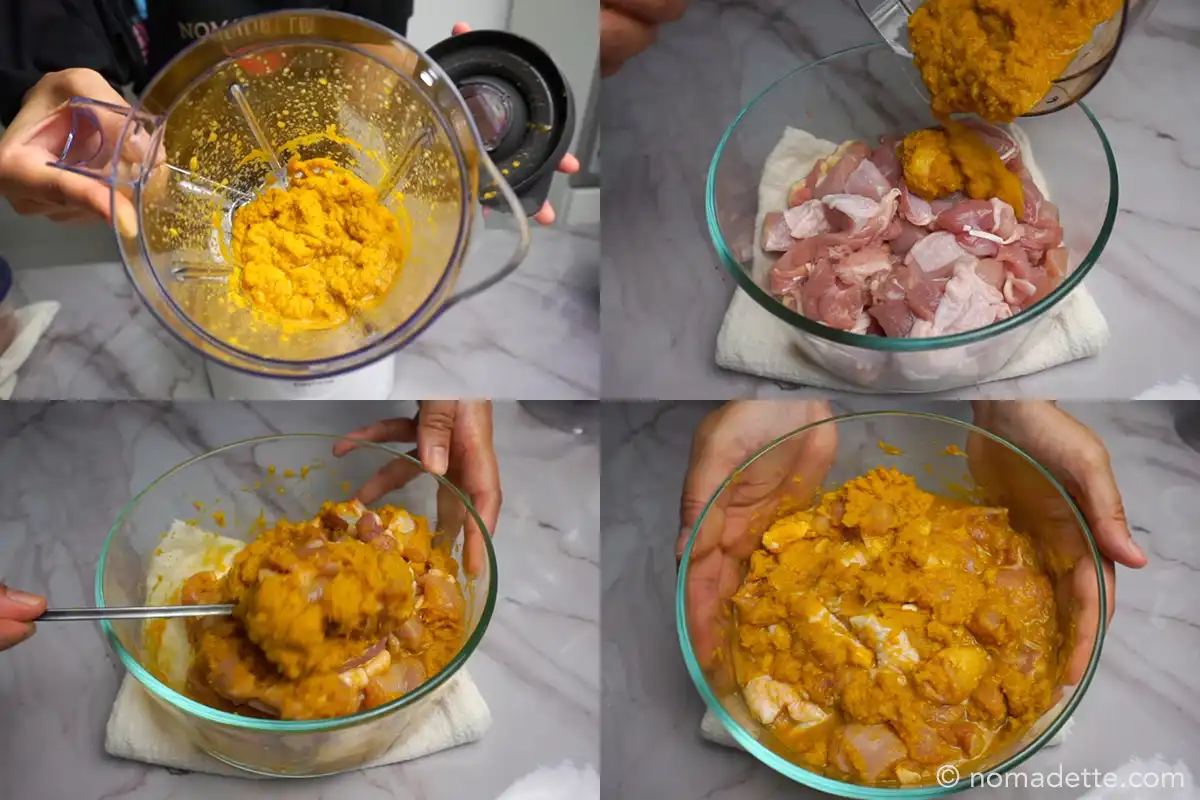
- Pour marinade over the chicken pieces and massage to coat.
- Place marinade container in the fridge. Allow to marinade at least 2 hours, overnight is always best. Marinate the chicken pieces in the flavourful mixture, allowing it to absorb the spices and aromatics.
3. Skewer Marinated Chicken
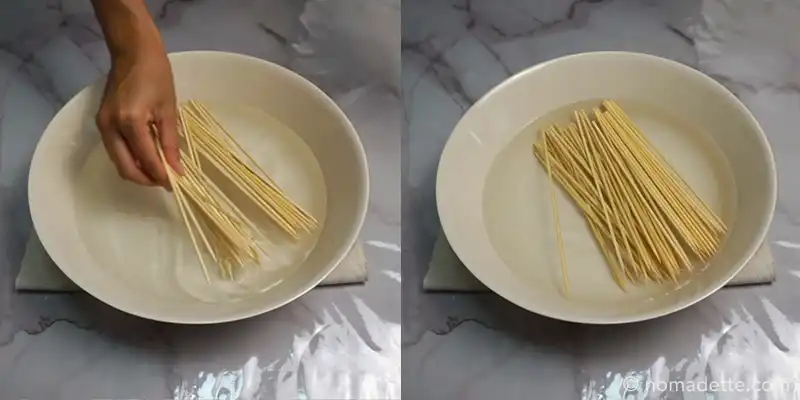
- Soak bamboo skewers in water for 20 minutes and up to 24 hours earlier. Doing this will prevent the skewers from burning up or catching fire when you’re cooking the satays.
- For efficiency, you can soak the bamboo skewers in the same time that you marinade the chicken.
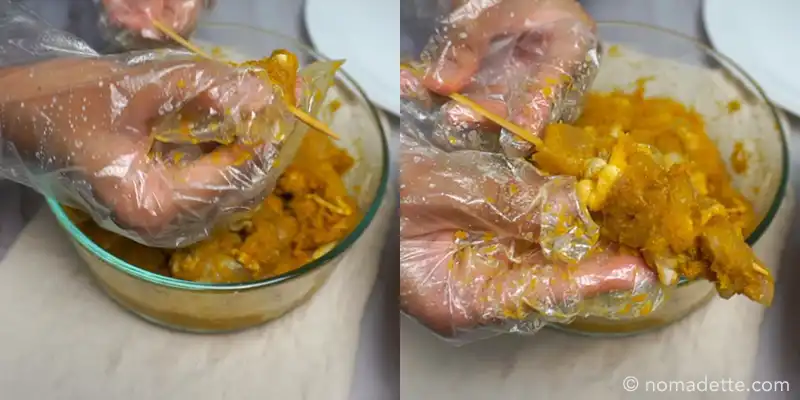
- When you’re ready to skewer, carefully poke each chicken piece with the skewer, stopping just about halfway the sticks. For a standard 8-inch satay stick, you should be able to fit about 3-4 chicken chunks.
- The turmeric in the marinade stains! I highly recommend wearing gloves as you’re handling the satays.
- TIP! Layer on chicken skin in between the meat for extra fattiness and richness.
4. Cooking the Chicken Satay
Grilling

Before cooking, prepare the coconut oil and a brush for basting.
- Grill the skewers over an open flame or on a grill until the chicken is cooked to perfection. Make sure the grill is hot before putting on the satays.
- Continuously brush the oil on the chicken pieces to keep them moist.
While the traditional method involves grilling the satay skewers over an open flame, variations exist. At home, you can also grill these, but I find there are easier techniques at home that can yield quicker and more reliable Satays every time!
Air Frying

Before cooking, prepare the coconut oil and a brush for basting.
- Preheat air fryer at 180°C/350°F for 5 minutes.
- Brush the air fryer rack with oil. Place the Satays on the rack in a single layer. Brush more oil on the satays.
- Air fry at 180°C/350°F for 15-20 minutes. Halfway through, remove the air fryer, and flip the satays to the other side for even cooking. Brush on more oil. Place the air fryer back in to finish cooking.
Oven Roasted
Before cooking, prepare the coconut oil and a brush for basting.
- Preheat the oven at 180°C/350°F for about 10 minutes.
- Place the Satays on the rack in a single layer. Brush more oil on the satays.
- Bake the satays in the oven at 180°C/350°F for 25 to 35 minutes. Halfway through, flip the satays to the other side for even cooking. Brush on more oil.
- OPTIONAL: At the last 10 minutes, turn the oven setting on to ‘Broil’. Place satay racks to the top rack layer. This will give the satays a nice charred surface, as if you’ve grilled them!
Pan Frying
- To pan fry, add oil to a pan. Use a pan large enough that you’re able to lay the sticks flat on.
- Once hot, add the satays. Allow to cook on one side for 5 minutes, before flipping over to the other side to finish cooking for another 5 minutes.
TIP! If you’re planning to pan fry the satays as you’re making them, skip the skewering! You can simply stir fry the chicken satays without the sticks straight in the pan or wok. This is called Satay Goreng or Stir Fried Satay. Satay is also commonly prepared this way, especially at home.
5. Serve
- Serve the chicken satay hot, accompanied by the delectable peanut sauce, raw onion slices, cucumber slices, and rice cakes or ketupat/lontong.
Peanut Sauce
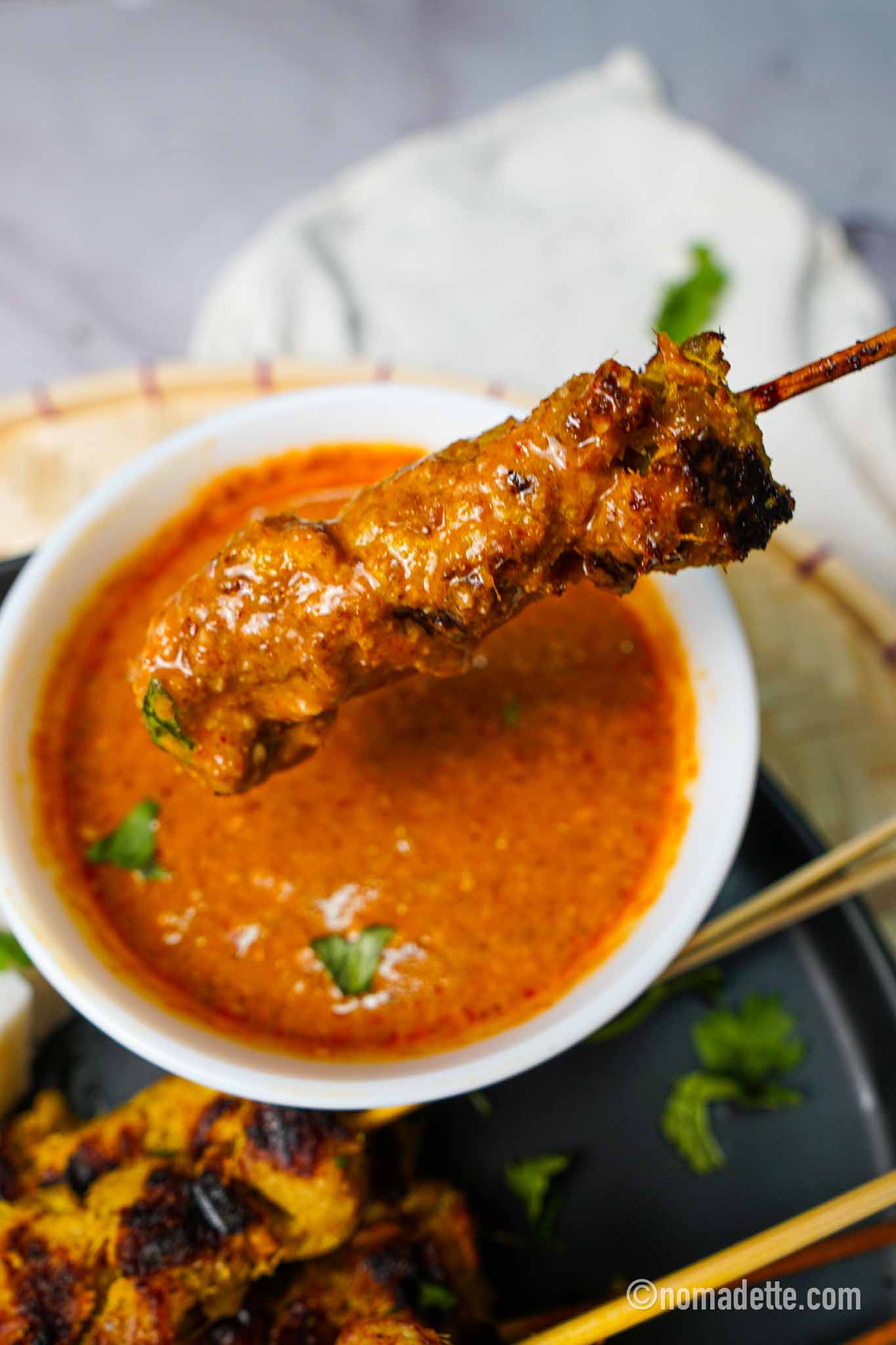
A proper peanut sauce is as important as the satay sticks themselves!
A creamy, slightly spicy peanut sauce is an essential accompaniment for chicken satay. It’s made from roasted peanuts, coconut milk, tamarind, and dried chilli paste, for extra richness and addictive heat. I can’t emphasise enough on having a good Peanut Sauce to complete your satay experience – check out my recipe right here!


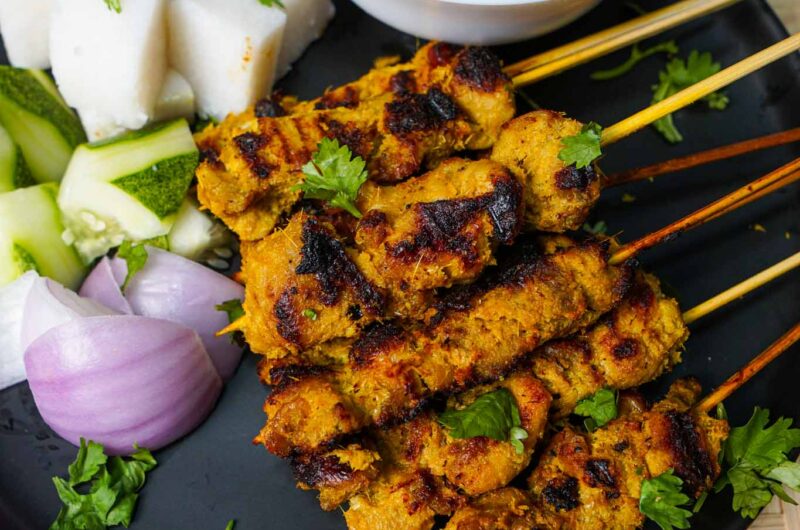
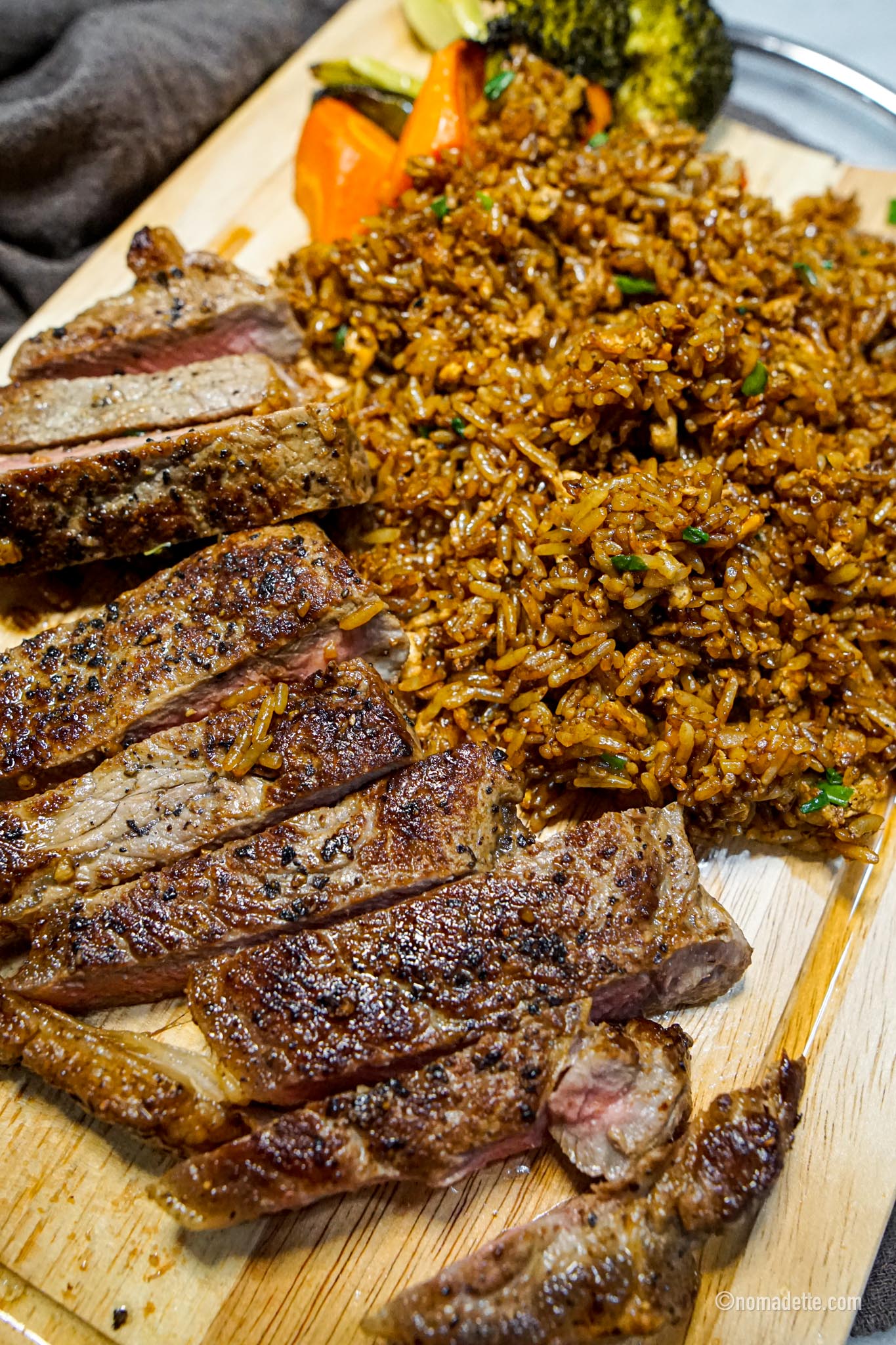

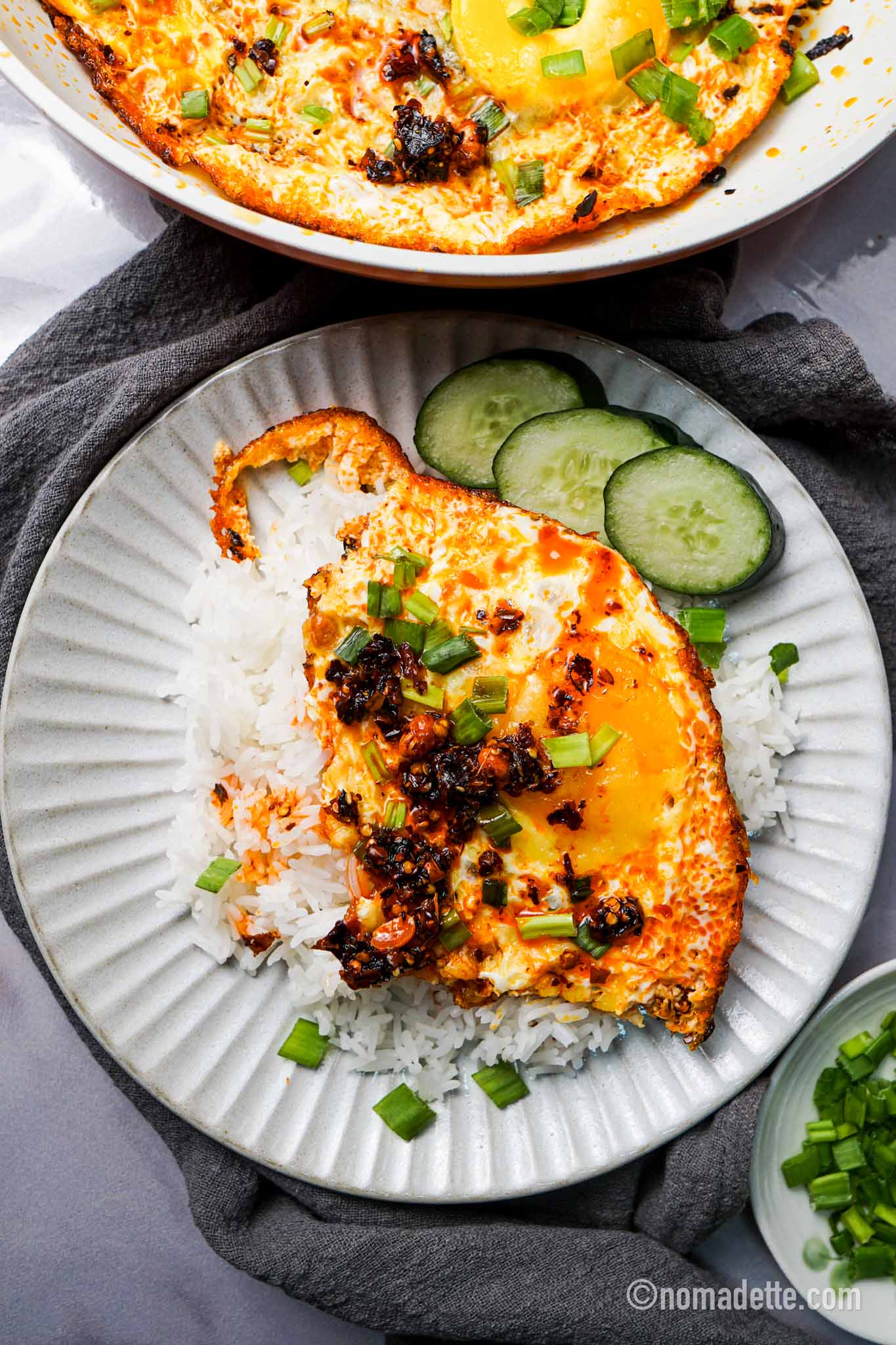

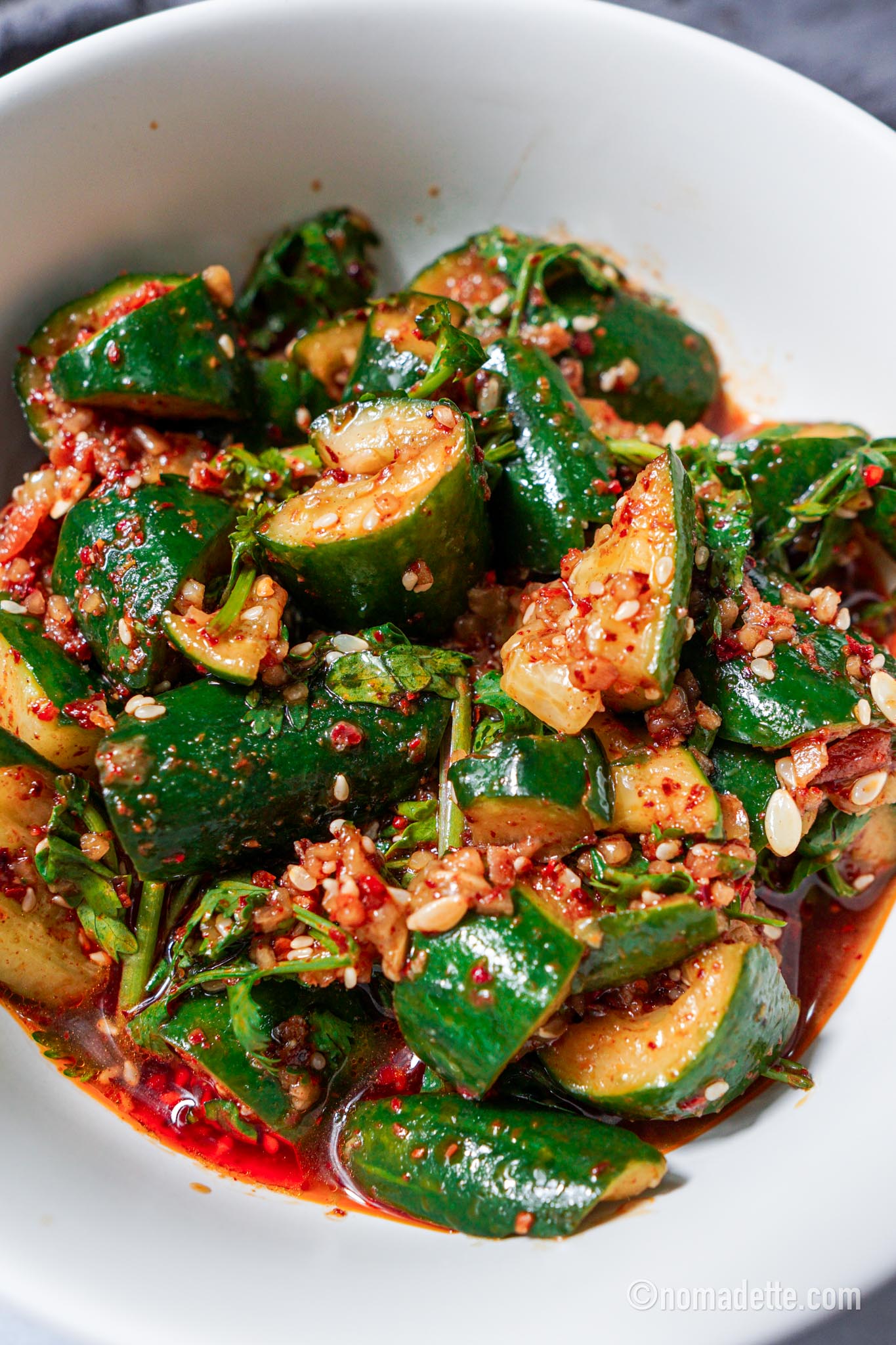
Tried out this recipe tonight using a cast iron grill since we didn’t want start up the BBQ for a few skewers.
Was pleasantly surprised how good this tasted, definitely going to try it on an open flame next time.